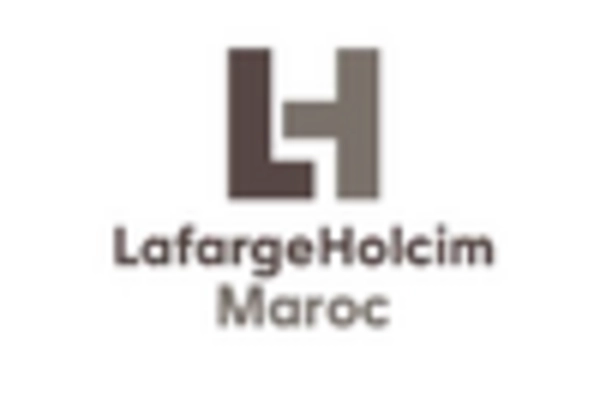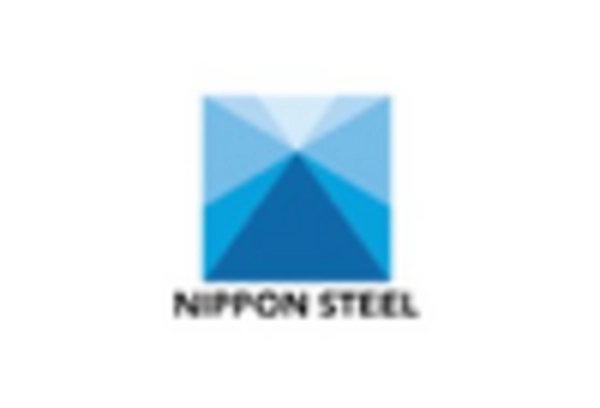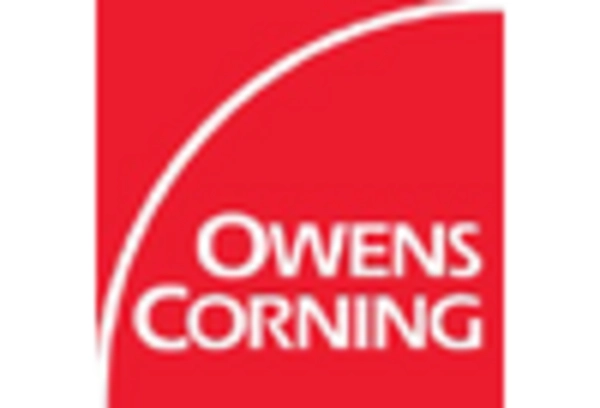Government Initiatives and Funding
Government initiatives aimed at promoting sustainable construction practices are playing a pivotal role in shaping the advanced building-materials market. Various federal and state programs are providing funding and incentives for the adoption of innovative building materials that meet environmental standards. For instance, the Department of Energy has launched initiatives to support the development of energy-efficient materials, which is likely to enhance market growth. In 2025, it is estimated that government funding for sustainable building projects will exceed $10 billion, further stimulating demand for advanced materials. These initiatives not only encourage innovation but also create a favorable regulatory environment, thereby bolstering the advanced building-materials market.
Technological Advancements in Construction
The advanced building-materials market is experiencing a surge due to rapid technological advancements in construction methodologies. Innovations such as 3D printing and modular construction techniques are revolutionizing how materials are produced and utilized. These technologies not only enhance efficiency but also reduce waste, aligning with the industry's sustainability goals. In 2025, the market for advanced building materials is projected to reach approximately $150 billion, driven by these innovations. Furthermore, the integration of artificial intelligence in material selection and project management is streamlining operations, thereby increasing productivity. As construction firms adopt these technologies, the demand for advanced materials is likely to grow, indicating a robust future for the advanced building-materials market.
Urbanization and Infrastructure Development
Urbanization trends in the United States are significantly impacting the advanced building-materials market. As urban populations grow, there is an increasing need for infrastructure development, including residential, commercial, and industrial projects. This demand is expected to drive the market for advanced materials, which are essential for constructing durable and sustainable buildings. In 2025, the urbanization rate is projected to reach 82%, further intensifying the need for innovative building solutions. Advanced materials, such as high-performance concrete and lightweight composites, are becoming essential in meeting the challenges posed by urban growth. This trend suggests a promising outlook for the advanced building-materials market as it adapts to the evolving needs of urban environments.
Consumer Preferences for Sustainable Products
Consumer preferences are increasingly shifting towards sustainable products, significantly impacting the advanced building-materials market. As awareness of environmental issues grows, consumers are more inclined to choose materials that are eco-friendly and sustainable. This trend is reflected in the rising demand for recycled materials and those with low environmental impact. In 2025, it is anticipated that the market for sustainable building materials will account for over 30% of the total advanced building-materials market. Manufacturers are responding by developing products that align with these consumer preferences, thereby enhancing their market competitiveness. This shift in consumer behavior is likely to drive innovation and growth within the advanced building-materials market.
Increased Demand for Energy-Efficient Solutions
The advanced building-materials market is significantly influenced by the rising demand for energy-efficient building solutions. As energy costs continue to escalate, both consumers and businesses are seeking materials that enhance energy performance. Insulation materials, energy-efficient windows, and reflective roofing are gaining traction, contributing to a projected market growth of 8% annually through 2025. This shift is not only driven by economic factors but also by a growing awareness of environmental impacts. The adoption of energy-efficient materials is seen as a critical step towards achieving sustainability goals, thereby propelling the advanced building-materials market forward. Consequently, manufacturers are increasingly focusing on developing innovative products that meet these energy efficiency standards.

















Leave a Comment